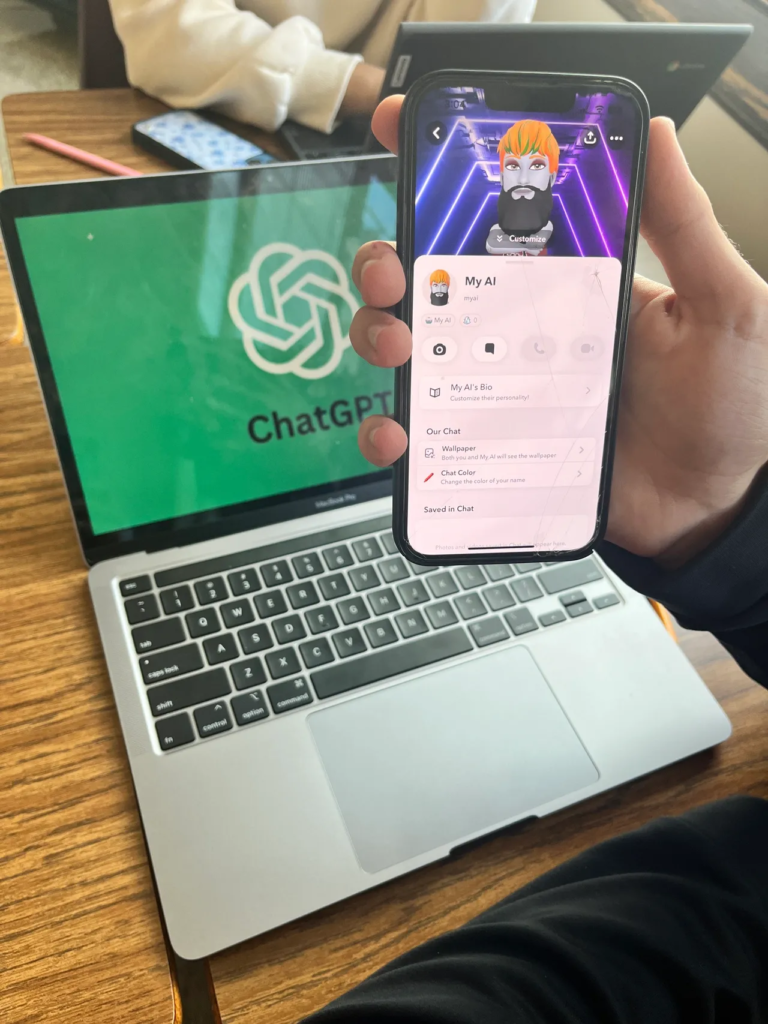Olivia Stubbs
Features Editor

Recently, Snapchat AI and ChatGPT have become two of the most popular chatbots among RJR students.
With its perpetual place in teachers’ minds and students’ browser history, artificial intelligence is finding its place at R.J. Reynolds. This year, artificial intelligence (AI) has become more advanced and more accessible than ever. While this progress is exciting, the effects of AI at school are difficult to define. For some teachers, AI is simply a new way for students to cheat.
“I think that [AIs] have made it a lot easier to cheat and get around doing the learning, unfortunately,” math teacher Jacob Diskin said. “I think that it does pose new issues as a teacher to try to help students actually do the learning and not just find the answers through AI.”
Like Diskin, many teachers have struggled to prevent students from using AI for assignments. New online chatbots like ChatGPT and Snapchat AI are easy for students to access and utilize, making it difficult for teachers to keep them away.
“I think the biggest change that I’ve noticed is students using Snapchat AI to try to do work,” Diskin said. “I’m trying to figure out how to deal with that, but it’s a little hard.”
Many are concerned that AI usage will have a negative impact on student learning.
“I don’t think [AI] is very good,” freshman Evie Soriano said. “What if the information that people are supposed to be learning ends up not actually going into their brains because they’re using AI to finish the work for them?”
This opinion is prevalent, with some teachers already seeing the effects of students cheating with AI. However, some teachers have changed their stance, beginning to endorse the use of AI at school. One such example is biology teacher Melanie Eldridge.
“At first, I think I was really irritated and just saw [AI] as a tool for cheating,” Eldridge said. “But over the summer, I tried it out myself and experimented with it. It certainly can still be used for cheating, but I think it’s a tool that teachers and students should learn how to use responsibly.”
Eldridge is currently experimenting with different policies regarding AI and finding ways to implement it into her curriculum.
“I think AI can, very much like a calculator, help us save time to get to the more complex part of the thinking process,” Eldridge said. “We can skip some basic steps to dive into more critical thinking.”
Other teachers have also introduced AI into their classrooms, using it in a variety of ways.
“In world history with Mr. Harvey, we’ve been using the ‘Classroom Companion,’” freshman Sophie Elliot said. “You can answer a question, and it will give you constructive criticism on it and help you improve your writing.”
Nevertheless, despite its advantages, overuse of AI remains a concern for almost all teachers, even when used constructively.
“If they rely too heavily on it, it will become apparent in some of their handwritten work,” Eldridge said. “I suppose it just depends how we teach students to use it and how students learn to use it.”
AI can have a wide range of both benefits and detriments in the classroom. As this school year goes by, it will be interesting to see how teachers, students, and administrators learn to harness this innovation and its effects on education at RJR.